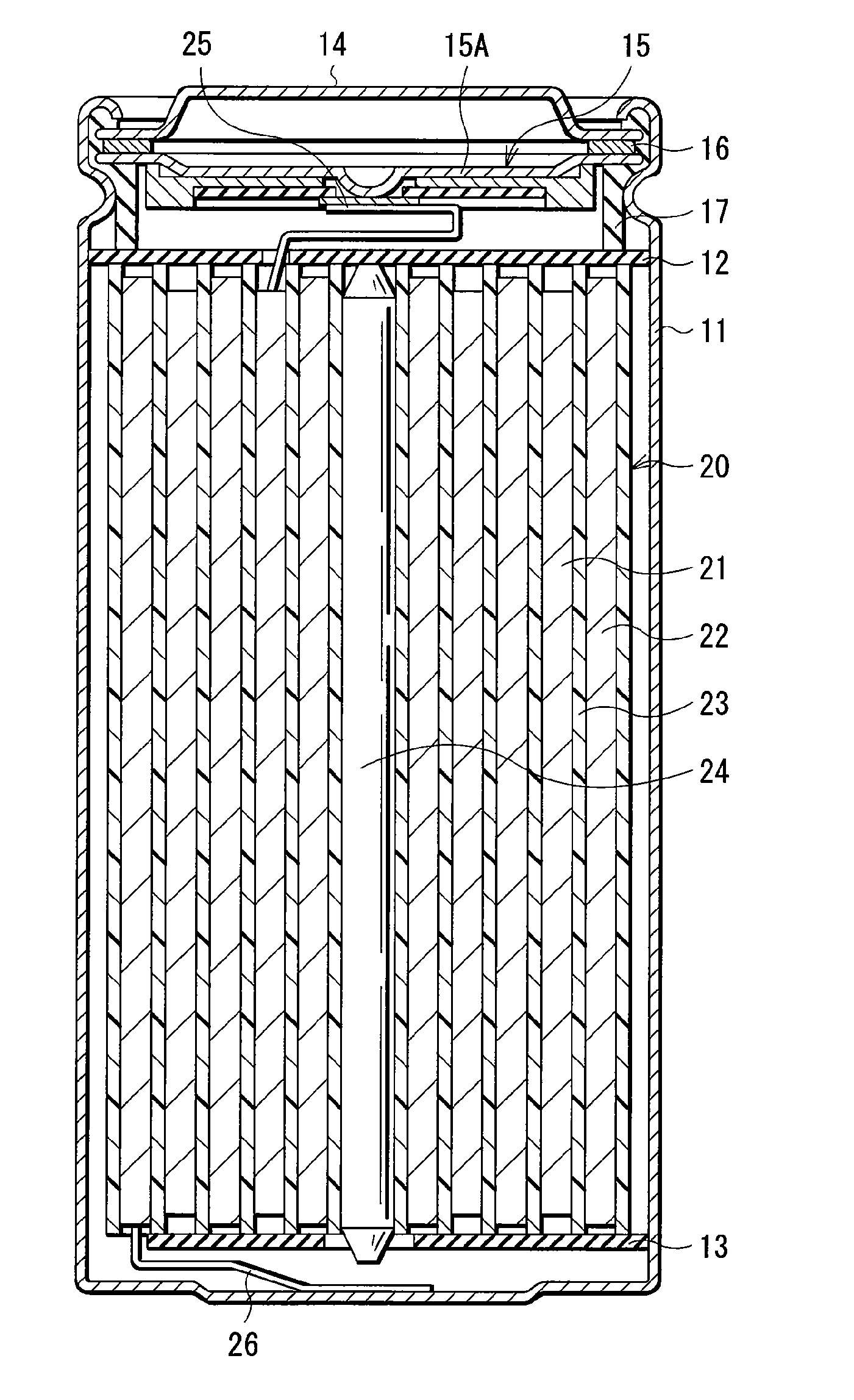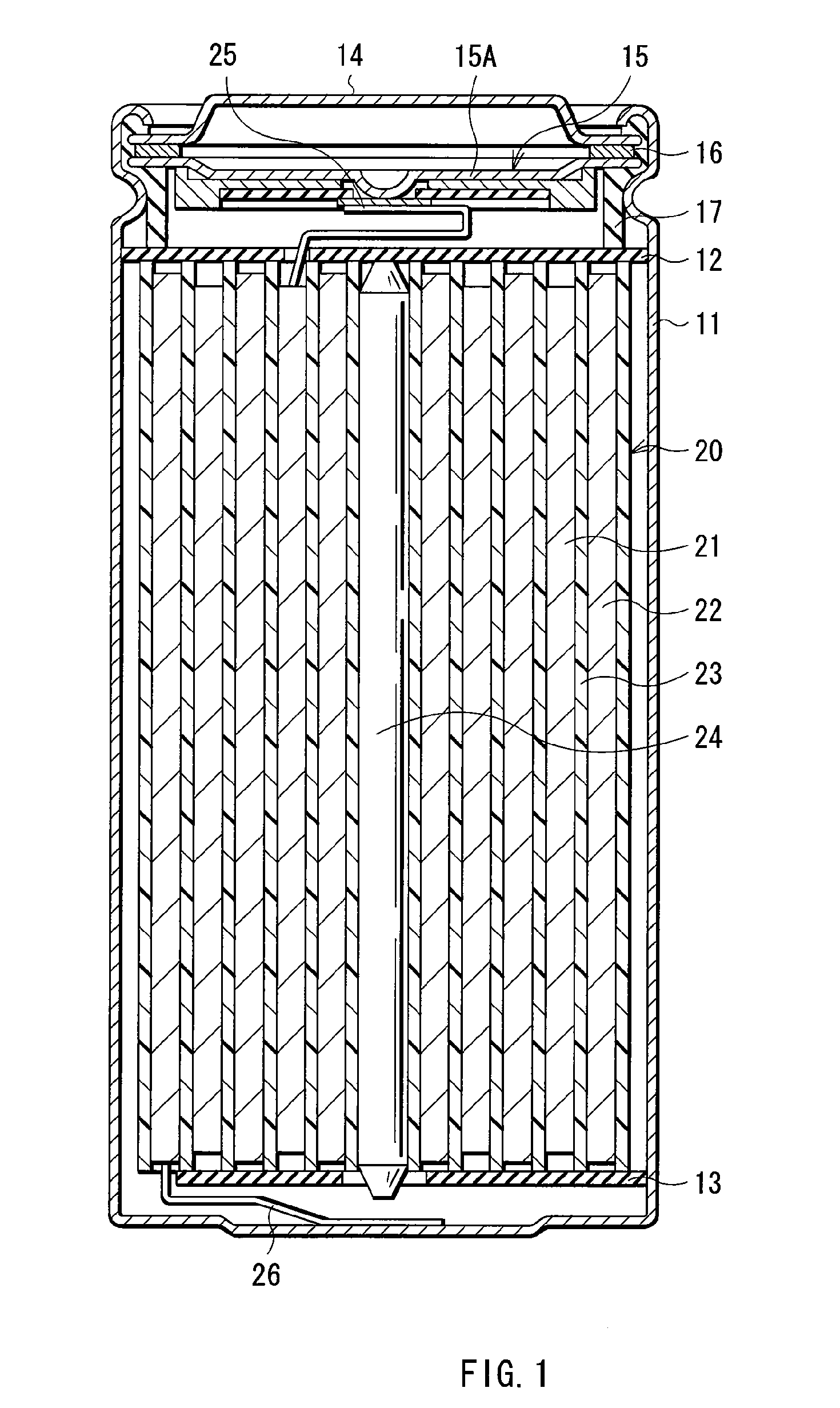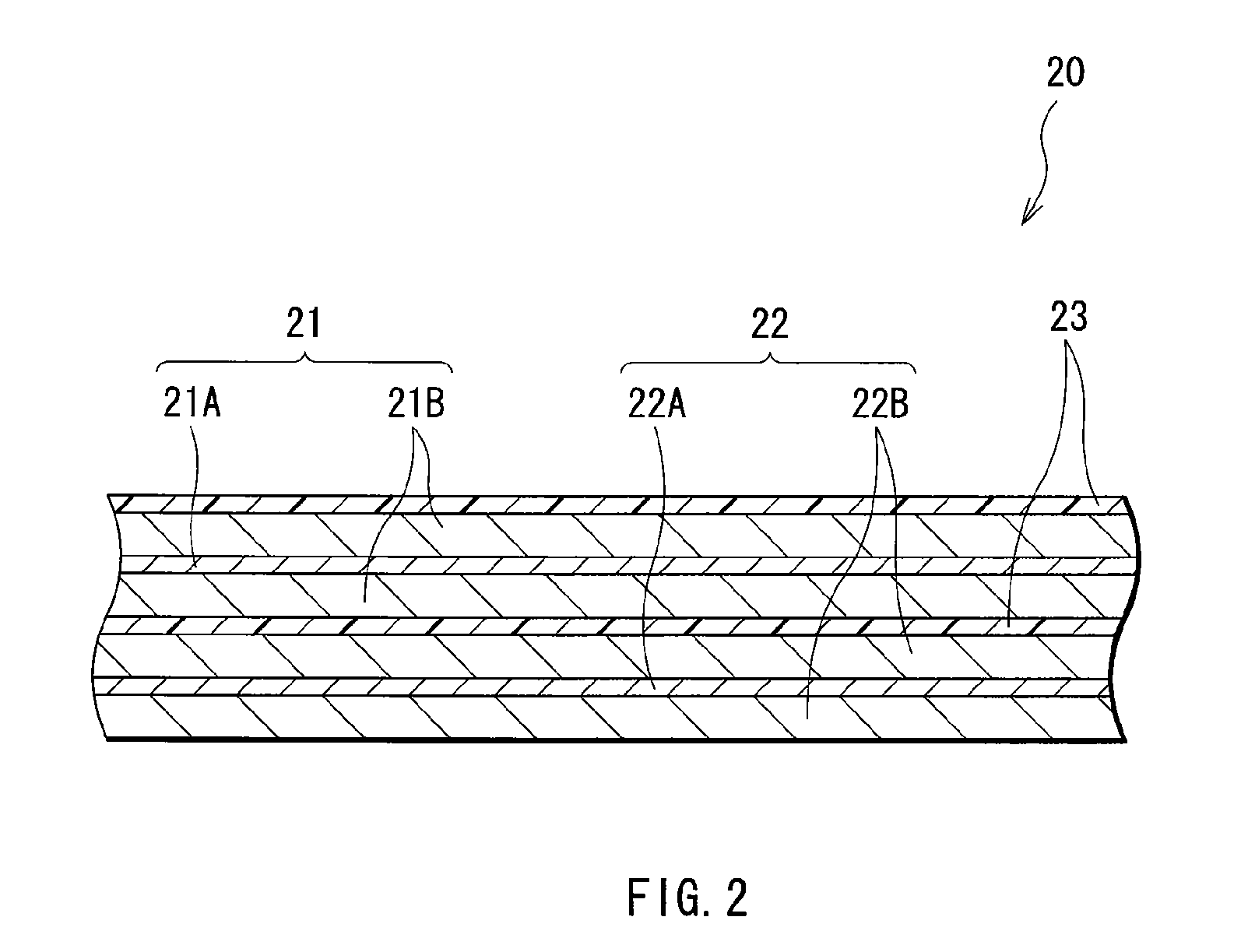Electrolytic solution and battery
a technology of electrolysis solution and battery, applied in the direction of non-aqueous electrolyte cells, cell components, sustainable manufacturing/processing, etc., can solve the problems of inactivation of lithium, decline in charge-discharge efficiency, and difficulty in obtaining sufficient cycle characteristics, so as to achieve the effect of improving cycle characteristics and improving cycle characteristics
- Summary
- Abstract
- Description
- Claims
- Application Information
AI Technical Summary
Benefits of technology
Problems solved by technology
Method used
Image
Examples
examples
[0104] Specific examples of the invention will be described in detail below.
examples 1-1 to 1-5
[0105] Coin-type secondary batteries shown in FIG. 5 were formed. The secondary batteries were formed through the following steps. A cathode 51 and an anode 52 were laminated with a separator 53 impregnated with the electrolytic solution in between, and they were sandwiched between a package can 54 and a package cup 55. Then, the package can 54 and the package cup 55 were caulked by a gasket 56 so as to form the secondary batteries. At first, 94 parts by weight of lithium cobalt complex oxide (LiCoO2) as a cathode active material, 3 parts by weight of graphite as an electrical conductor and 3 parts by weight of polyvinylidene fluoride as a binder were mixed to form a mixture, and N-methyl-2-pyrrolidone as a solvent was added to the mixture to form cathode mixture slurry. Next, the obtained cathode mixture slurry was uniformly applied to a cathode current collector 51A made of aluminum foil with a thickness of 20 μm, and was dried to form a cathode active material layer 51B with a th...
examples 2-1 to 2-5 , 3-1 to 3-5
Examples 2-1 to 2-5,3-1 to 3-5
[0112] As Examples 2-1 through 2-5, coin-type secondary batteries were formed as in the case of Examples 1-1 through 1-5, except that tin was used as an anode active material, and the anode active material layer 52B made of tin with a thickness of 5 μm was formed on the anode current collector 52A made of copper foil with a thickness of 15 μm by vapor deposition. At that time, the filling amounts of the cathode active material and the anode active material were adjusted so that the open circuit voltage at the time of full charge became 4.20 V, and the precipitation of lithium metal on the anode 52 during charge was prevented, thereby the capacity of the anode 52 was represented by a capacity component by insertion and extraction of lithium.
[0113] As Examples 3-1 through 3-5, coin-type secondary batteries were formed as in the case of Examples 1-1 through 1-5, except that CoSnC-containing material powder including indium and titanium was used as an anod...
PUM
| Property | Measurement | Unit |
|---|---|---|
| open circuit voltage | aaaaa | aaaaa |
| relative permittivity | aaaaa | aaaaa |
| viscosity | aaaaa | aaaaa |
Abstract
Description
Claims
Application Information
 Login to View More
Login to View More - R&D
- Intellectual Property
- Life Sciences
- Materials
- Tech Scout
- Unparalleled Data Quality
- Higher Quality Content
- 60% Fewer Hallucinations
Browse by: Latest US Patents, China's latest patents, Technical Efficacy Thesaurus, Application Domain, Technology Topic, Popular Technical Reports.
© 2025 PatSnap. All rights reserved.Legal|Privacy policy|Modern Slavery Act Transparency Statement|Sitemap|About US| Contact US: help@patsnap.com



